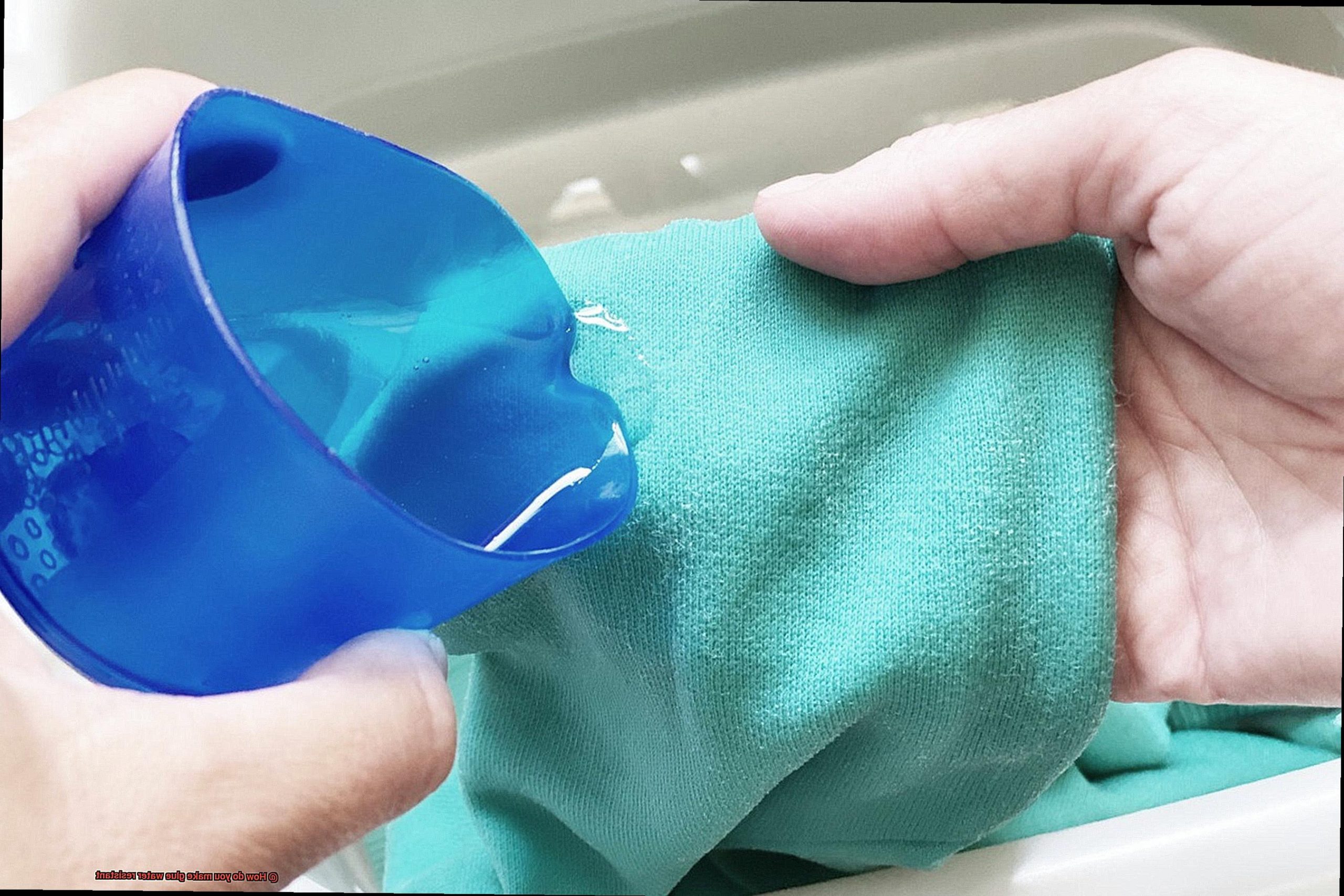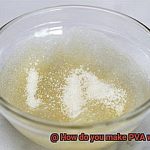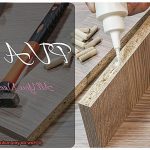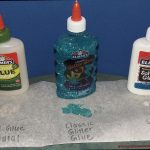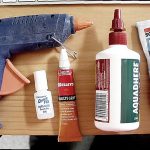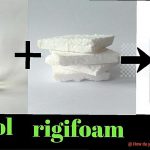Are you tired of seeing your hard work and creativity go down the drain due to a single drop of water? It’s a common problem faced by many craft enthusiasts. But, don’t worry, we’ve got your back. The solution is simple – make your glue water-resistant. Yes, it’s possible. With the right ingredients and method, you can ensure that your masterpiece stays intact even in the face of moisture.
There are different types of glue available in the market, from PVA glue to epoxy resin. Each requires a unique approach to achieve water resistance. But, fret not. We’ve got all the information you need to make any type of glue water-resistant.
In this article, we’ll share our top-notch tips and tricks for making your glue water-resistant. You’ll discover the primary ingredients that provide water resistance, various application methods, and some common mistakes to avoid while creating water-resistant glue.
So, get ready to dive into the world of water-resistant glue with us. By the end of this article, you’ll be an expert at creating glue that can withstand any element thrown its way – be it water or time.
What is Water Resistance?
Contents
- 1 What is Water Resistance?
- 2 Different Types of Glue and Their Water Resistance
- 3 Adding a Waterproofing Agent to Glue
- 4 Using Specialized Waterproof Glue Products
- 5 White School Glue and Its Water Solubility
- 6 Epoxy and Cyanoacrylate (Super Glue) for Higher Water Resistance
- 7 Reading Manufacturer’s Instructions and Recommendations
- 8 Considerations When Making Glue Water Resistant
- 9 Conclusion
The culprit may be the lack of water resistance in your glue. Water resistance is the term used to describe a material’s ability to withstand the effects of water without being damaged or degraded. In the context of glue, this means that the glue can maintain its bond even when exposed to water.
Water resistance is particularly important in applications where the glued object may be exposed to moisture or water, such as in outdoor furniture or boats. Different types of glue vary in their level of water resistance, so it’s crucial to select the appropriate glue for each project.
Some glues, like white school glue, dissolve quickly when exposed to moisture, while others like epoxy or cyanoacrylate (super glue) are naturally more water-resistant. When choosing a water-resistant glue, consider the intended application and the level of water resistance needed.
To increase water resistance, you can add a waterproofing agent such as silicone caulk or clear polyurethane sealant to the glue before mixing it together. Alternatively, you can use a specialized waterproof glue product that is specifically designed for use in wet or damp environments.
It’s crucial to follow the manufacturer’s instructions and recommendations when attempting to modify or enhance the water resistance of any type of glue. Temperature and humidity also play a role in a glue’s effectiveness, with higher temperatures and humidity reducing the effectiveness of water resistance.
Different Types of Glue and Their Water Resistance
Glue is a versatile tool that can be used for a wide range of projects. However, not all glues are created equal when it comes to water resistance. Knowing the different types of glue and their varying levels of water resistance can help you choose the right adhesive for your project.
White Glue
Also known as school glue or PVA glue, white glue is not water-resistant. This type of glue is made from polyvinyl acetate, which dissolves when exposed to water. While it is great for many arts and crafts projects, it is not suitable for use in wet environments.
Hot Glue
Hot glue is made by melting a thermoplastic adhesive with a hot glue gun. While it can be used for a variety of projects, it is not recommended for use in areas where it will be exposed to moisture or water.
Epoxy Glue
Epoxy forms a strong bond that is resistant to water and many other types of chemicals and solvents. It is made by mixing two components together – a resin and a hardener. This makes it an excellent option for projects that require high levels of water resistance, such as boat-building or outdoor furniture construction.
Cyanoacrylate Glue (Superglue)
Superglue forms an almost instant bond and can be used on various materials, including metal, plastic, and wood. However, it can become brittle over time when exposed to prolonged moisture.
Marine-Grade Adhesive
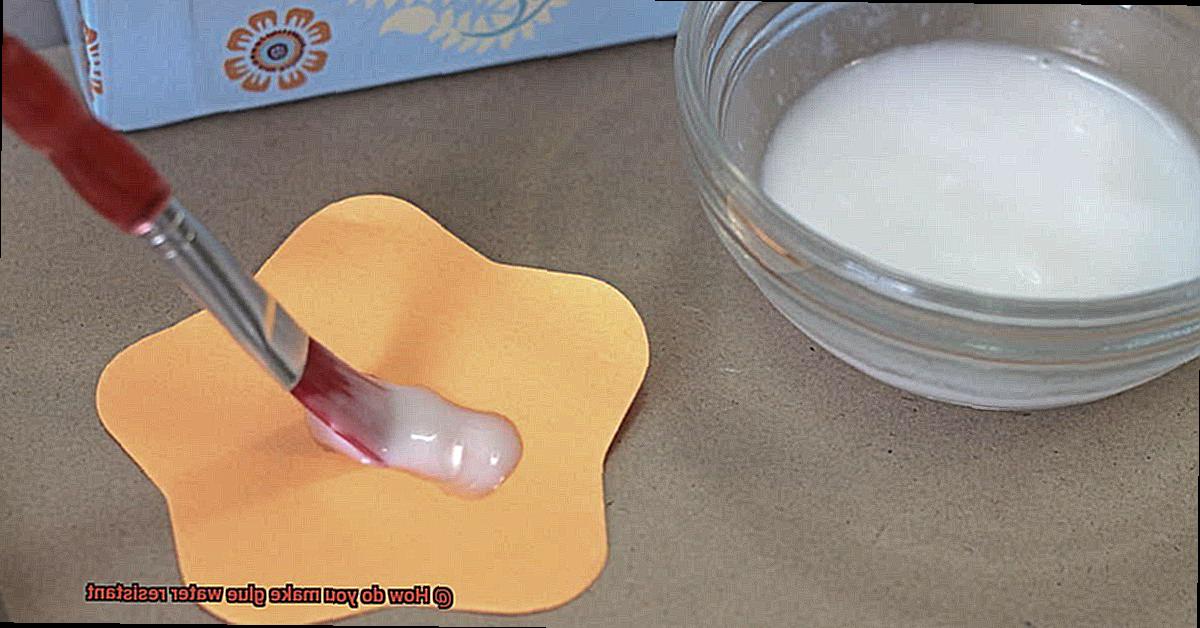
This specialized adhesive is commonly used in boat-building and other marine applications. It is highly resistant to saltwater and other types of moisture.
When selecting a glue for your project, consider the specific needs of your project and choose an adhesive that provides the necessary level of water resistance. By understanding the different types of glue and their varying levels of water resistance, you can ensure that your project will withstand the elements and last for years to come.
Adding a Waterproofing Agent to Glue
Fear not. Adding a waterproofing agent to glue is the perfect solution to make your projects water-resistant and long-lasting. Let’s dive deeper into this topic.
The process of adding a waterproofing agent to glue is simple, yet crucial. You can use materials like silicone, PVA, latex, acrylics, or oils as your waterproofing agent. Silicone and PVA are the most popular options due to their effectiveness in repelling water. Mixing them with glue in the recommended ratio and stirring well for uniform distribution is key.
When it comes to choosing the right waterproofing agent for your glue, silicone stands out from the crowd. It’s a synthetic polymer that has excellent water-repelling properties and is widely used in various applications. PVA, on the other hand, is a synthetic resin that forms a strong and flexible bond when mixed with water. When added to glue, it offers excellent resistance to moisture.
Other materials that can be used as waterproofing agents include latex, acrylics, and various types of oils. These materials are effective at repelling water and can also be mixed with glue to improve its resistance to moisture.
It’s essential to keep in mind that using the correct ratio is crucial. Adding too much waterproofing agent may result in a weaker bond between the surfaces being glued together, while adding too little may not provide enough protection against water damage. Always follow the recommended ratios provided by the manufacturer or conduct a small test before using the glue for larger projects.
Using Specialized Waterproof Glue Products
There are specialized waterproof glue products that can save the day. These superhero-like adhesives are specifically designed to withstand exposure to water and moisture without losing their adhesive properties.
Marine grade adhesive is a popular option for those who need their projects to survive harsh marine environments. This two-part formula needs to be mixed before application for maximum effectiveness. It’s commonly used in boat building and repair and can handle exposure to saltwater and other harsh marine environments.
Silicone-based adhesives are known for their water resistance and ability to bond with a variety of surfaces, including plastics, metals, and glass. While they can be more difficult to work with than traditional glue products, they offer a strong, long-lasting bond. However, they may require a longer drying time than other adhesives.
Epoxy adhesives are another powerful option. They consist of two parts that need to be mixed together and create a strong, durable bond that is resistant to water and environmental factors. This adhesive is perfect for projects that require a strong hold that can withstand exposure to water.
White School Glue and Its Water Solubility
As an expert on white school glue and its water solubility, I’m here to help you make your glue superhero-like waterproof.
White school glue, also known as PVA (polyvinyl acetate) glue, is a popular adhesive among students, artists, and crafters. It is known for its strong bonding capabilities and ease of use. However, one downside to this versatile glue is its water solubility. When exposed to moisture, the glue can break down and lose its adhesive properties. This can be problematic for projects that require water resistance, such as outdoor decorations or items that will be exposed to damp environments.
Fortunately, there are several ways to make white school glue water resistant.
Firstly, you can add a waterproofing agent to the glue. Mixing in a small amount of silicone sealant or acrylic paint will not only make the glue water-resistant but also increase its strength and durability.
Secondly, you can apply a waterproofing spray or coating over the dried glue. Polyurethane sealant or clear acrylic spray can create a protective barrier over the glue, preventing moisture from penetrating and causing it to break down.
It’s important to note that these methods may slightly alter the appearance or texture of the glue. Therefore, it’s recommended to test the adhesive on a small area of your project before applying it to the entire surface.
Epoxy and Cyanoacrylate (Super Glue) for Higher Water Resistance
Fear not, for epoxy and cyanoacrylate (also known as super glue) provide superior water resistance compared to other types of adhesives. As an expert in the field, I have compiled some tips and tricks to help you achieve the ultimate waterproof bond.
Epoxy is a two-part adhesive that creates a strong and durable bond when its resin and hardener components are mixed together. Cyanoacrylate, on the other hand, forms a fast-drying bond when it comes into contact with moisture. Both adhesives offer excellent water resistance, making them ideal for bonding materials that will be exposed to moisture or other harsh conditions.
To maximize the water resistance of these adhesives, it’s crucial to ensure that the surfaces you are bonding are clean and dry. Any dirt, grease or moisture on the surface can weaken the bond and reduce its effectiveness. Take some time to clean and dry the surfaces before applying the adhesive.
When applying the adhesive, follow the manufacturer’s instructions carefully. For epoxy, mix the two components thoroughly and apply it evenly to both surfaces. For cyanoacrylate, apply a small amount of adhesive to one surface and press the two surfaces together firmly.
Allow the adhesive to cure completely before exposing it to water or other harsh conditions. The curing time can vary from a few hours to several days depending on the adhesive type and curing conditions. Be patient and resist the urge to test its water resistance prematurely.
For even higher levels of water resistance, consider using specialized epoxy and cyanoacrylate formulations that contain additives such as rubber or silicone. These will help improve their ability to withstand exposure to water.
Reading Manufacturer’s Instructions and Recommendations
If so, then the first step is simple – read and follow the manufacturer’s instructions and recommendations.
Different types of glue require different approaches to achieve water resistance. That’s why it’s important to read the instructions carefully and follow them to the letter.
For instance, some manufacturers may recommend adding a specific type of waterproofing agent to the glue mixture, while others may suggest using a particular type of primer or sealer before applying the glue. By following these recommendations, you can ensure that your glue will be able to stand up against water exposure.
But it’s not just about following the instructions. You also need to consider the materials being glued together and any potential exposure to water.
For instance, outdoor furniture that will be exposed to frequent or prolonged water exposure may require a more heavy-duty adhesive or additional steps to ensure water resistance. So, be sure to take these factors into account when choosing your adhesive and following the manufacturer’s recommendations.
Here are some additional tips for achieving water-resistant glue:
- Pay attention to recommended drying times or curing periods, as these can affect the final water resistance of the glue.
- Check if there are any specific application techniques recommended by the manufacturer.
- Consider using a moisture meter to check the moisture content of the materials being glued together.
- Don’t forget about temperature. Some glues may require specific temperature ranges for optimal performance.
Considerations When Making Glue Water Resistant
Making glue water-resistant is a tricky business that demands careful attention to several key factors. First and foremost, it’s essential to consider the type of glue being used. Not all glues are created equal, and some may require special additives to make them water-resistant.
Another vital consideration is the intended use of the glue. If you’re planning on using it in an outdoor or wet environment, you’ll need to ensure that it is much more water-resistant than if it’s only going to be used indoors in a dry environment. The materials being glued together will also play a significant role in determining the level of water resistance required.
How you apply the glue can also affect its ability to resist water. If you apply the glue too thinly or unevenly, it may not provide adequate protection against water. Conversely, if you use too much glue, it may become brittle and crack when exposed to moisture.
Drying time is yet another crucial consideration. If the glue takes too long to dry, it may not fully bond before being exposed to water, which can compromise its water resistance.
To achieve optimal water-resistance in your glue, you’ll need to experiment with different types of glue and additives. Think of making glue water-resistant like following a recipe: get the ingredients right, follow the steps carefully, and observe the correct temperature for a perfect bond.
lmLchiwYaE4″ >
Also Read: Is Super Glue Waterproof? – Glue Things
Conclusion
In summary, ensuring that your projects can withstand the test of time and moisture is crucial, and making glue water-resistant is a key step in achieving this. It’s important to select the appropriate adhesive for each project since different types of glue require different approaches to achieve water resistance.
Epoxy and cyanoacrylate (super glue) are some of the most water-resistant adhesives available, but even white school glue can be made waterproof by adding a waterproofing agent or coating. To achieve optimal results, it’s also essential to consider factors such as the intended use of the glue, the materials being glued together, application techniques, and drying time.
One common method for increasing water resistance is adding a waterproofing agent like silicone caulk or clear polyurethane sealant to the glue before mixing it together. Alternatively, specialized waterproof glue products are available for use in wet or damp environments. Following manufacturer instructions and recommendations is crucial to ensure success.
By understanding the varying levels of water resistance among different types of glue, you can ensure that your hard work and creativity will last for years to come.

